Top 10 Best Things to Do in Cappadocia
Here are the top 10 things to do in Cappadocia during your travels.
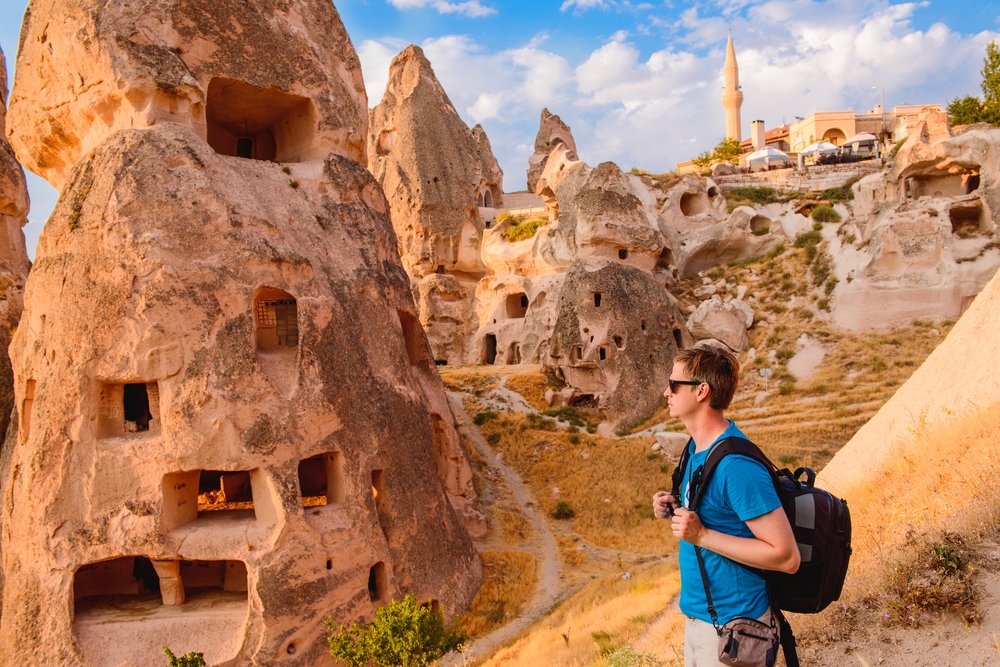
Here are the top 10 things to do in Cappadocia during your travels.

Ready to discover the ultimate top 10 best things to do during your trip to Cappadocia. This list represents the best top 10 activities that every traveler has to do when they are in the amazing town of Cappadocia in Nevşehir. Get ready to be amazed by amazing views, fun activities, great food and historical wanders... Cappadocia is truly an easy-to-visit city with a lot of activities. You will never get bored!
If you need more ideas, don't forget to check our larger list of 50 things to do in Cappadocia with more of off the beaten track ideas!
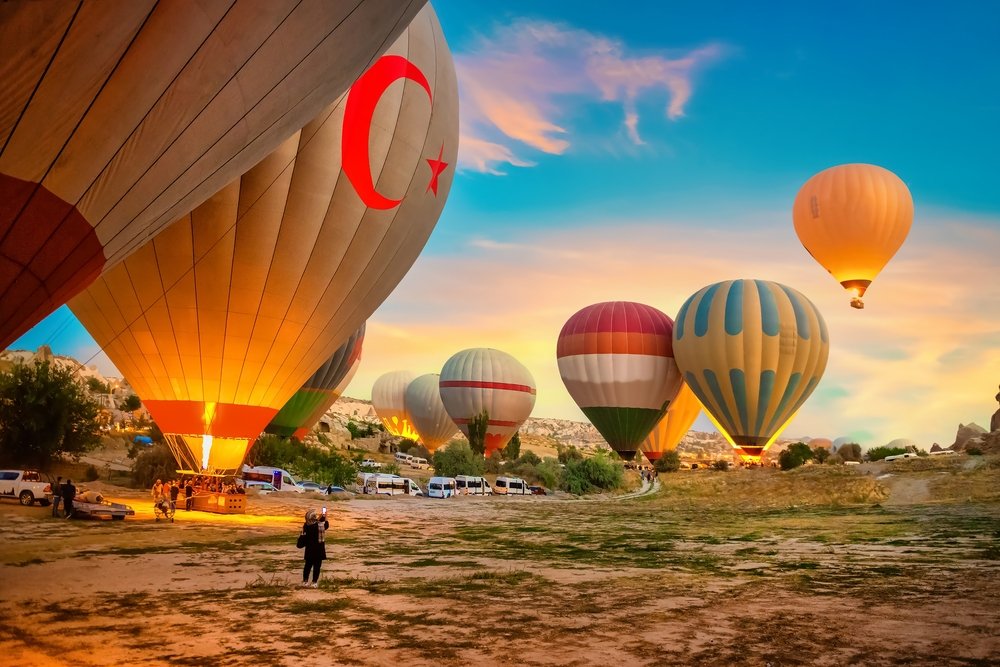
Cappadocia is an ideal destination for a hot air balloon ride due to its unique landscape, excellent weather conditions, and well-developed hot air ballooning industry. The region's dry climate with low winds makes it ideal for year-round ballooning, and experienced pilots ensure a safe and enjoyable experience.
Most hot air balloon rides in Cappadocia last for an hour, starting early in the morning with excellent visibility. The pilot will fly you over popular tourist attractions like the Göreme Open Air Museum, Uçhisar Castle, and Love Valley, as well as hidden gems like Soganli Valley and Ihlara Valley. After an hour in the air, the balloon will land gently in a field, and the pilot will help you out of the basket and serve you a champagne breakfast.
To take a hot air balloon ride in Cappadocia, book your ride in advance, arrive early on the day of your ride, dress in layers, wear comfortable shoes, and bring a camera to capture the stunning views. If you're planning a trip to Cappadocia, be sure to add a hot-air balloon ride to your itinerary.
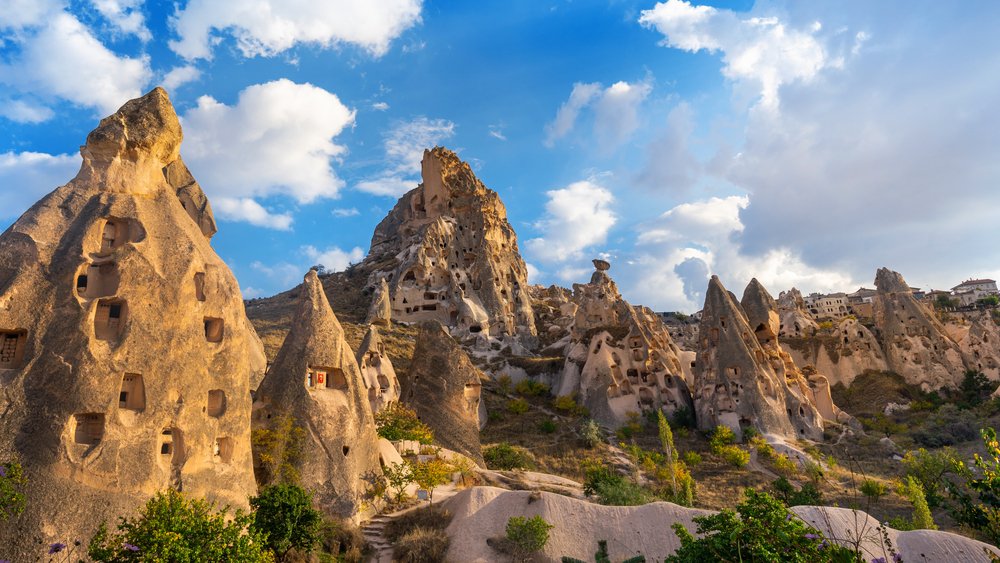
Love Valley in Cappadocia, Turkey, is a popular tourist destination known for its unique rock formations resembling phallic symbols and fairy chimneys, tall, thin rock formations shaped by erosion over millions of years. The valley's popularity stems from its otherworldly beauty, the presence of fairy chimneys, and its beautiful setting with stunning countryside views.
There are various activities to enjoy in Love Valley, including hiking through the valley, taking a hot-air balloon ride, or simply relaxing and enjoying the stunning views. Hiking through the valley offers a variety of trails, allowing visitors to see the rock formations up close and marvel at their otherworldly beauty. A hot-air balloon ride offers a unique perspective on the rock formations and the surrounding countryside.
For a more relaxing experience, visitors can relax in the valley, enjoying the stunning views from various viewpoints and packing a picnic lunch. The best time to visit Love Valley is during the spring or autumn, when the weather is mild.
To ensure a comfortable experience
Love Valley is a must-see destination in Cappadocia, Turkey, with its otherworldly rock formations, stunning views, and variety of activities to enjoy.
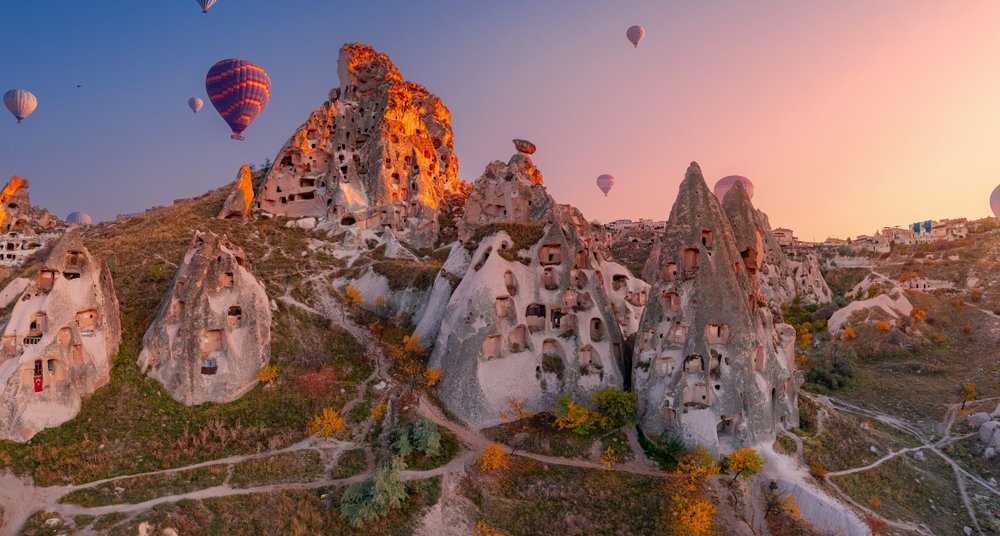
Uçhisar Castle in Cappadocia, Turkey, is a towering rock formation with a rich history dating back to the Hittite period (1600–1200 BC). The castle served as a lookout point, grain storage, military base, and food storage site for the Hittites, Romans (1st century BC–5th century AD), Byzantines (6th–15th centuries AD), and Ottomans (15th–20th centuries AD).
Visitors can climb a steep path to the top, where they can explore the castle's tunnels, rooms, and chambers. The castle also features several viewpoints, offering stunning views of the surrounding countryside, fairy chimneys, valleys, and villages.
To visit Uçhisar Castle,
Uçhisar Castle is a must-see for anyone visiting Cappadocia, offering a majestic fortress with stunning views and a rich history.
With a full day of the Cappadocia Red Tour, you can get into Uçhisar Castle without paying an entrance fee.
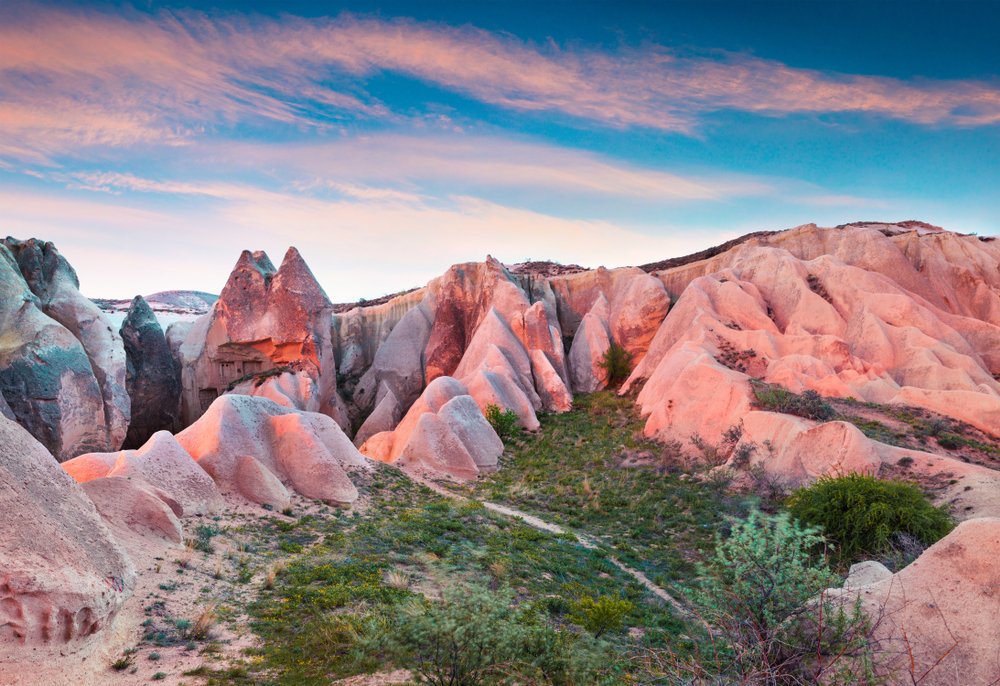
Red Valley, also known as Kizilcukur Valley, in Cappadocia, Turkey, impresses tourists with its red rock formations and fairy chimneys. The unusual and unearthly structures are thought to be the consequence of volcanic explosions millions of years ago. The valley has several fairy chimneys, a Cappadocia tourist feature.
There are several ways to experience Red Valley, including hiking, hot-air balloon rides, and relaxing with the views. Hiking through the valley gives a spectacular view of the red rock formations and agricultural land. Hot-air balloon flights give a unique view of the formations and surrounding area.
For a more relaxing activity, visitors can relax in the valley by sitting back and admiring the stunning views of hot air balloons early in the morning from various viewpoints. Picnic lunches and meals in the valley are also available for those looking to enjoy the scenery.
With its breathtaking red rock formations, breathtaking vistas, and abundance of enjoyable activities, Red Valley is an essential stop in Cappadocia, Turkey.
TIP:
To escape the heat of the day, start your walk in Red Valley early in the morning or late in the afternoon. In the valley, there is a small café where beverages and refreshments are available for purchase; alternatively, you may bring your own food and have a picnic.
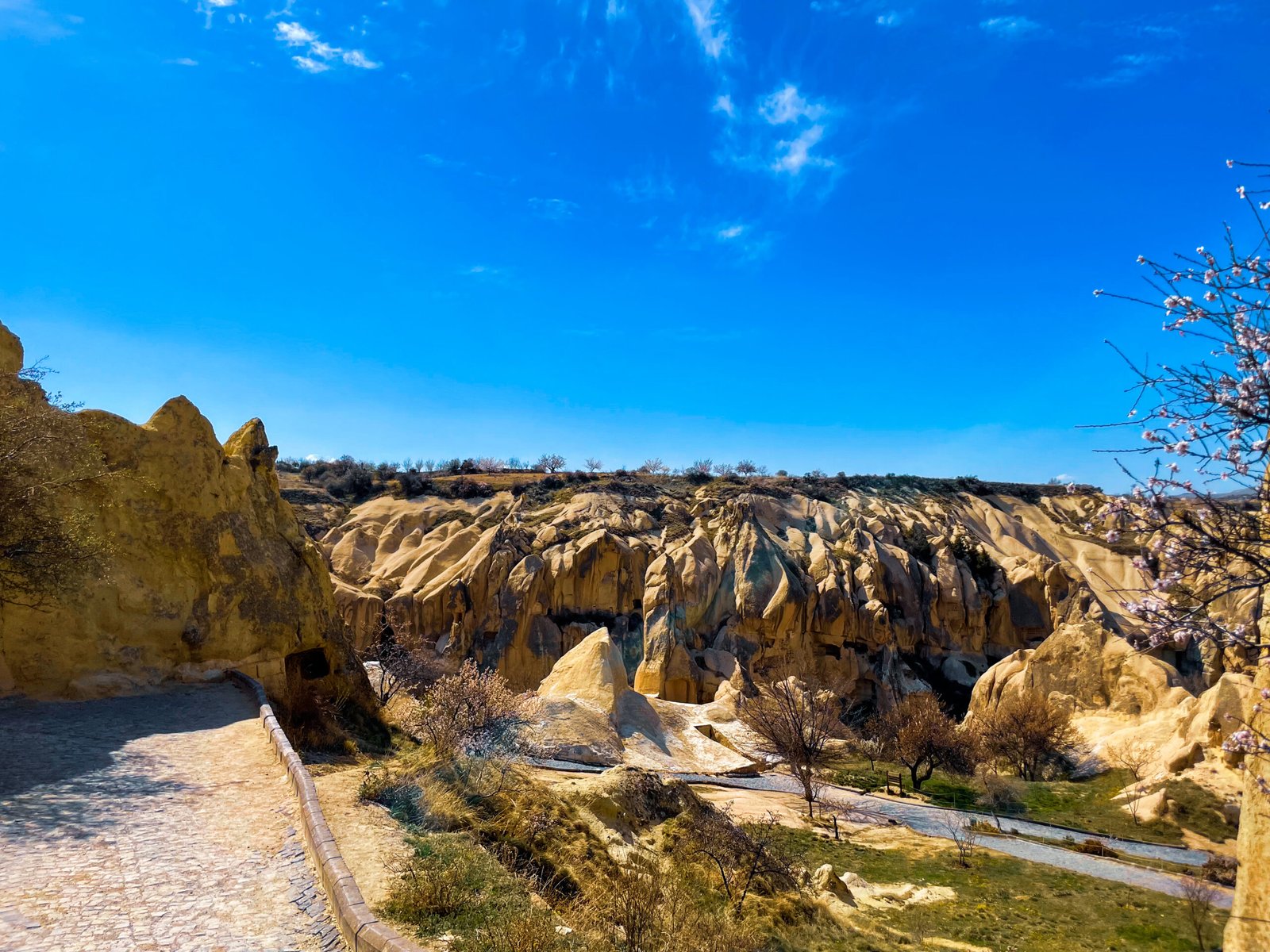
The Göreme Open Air Museum in Cappadocia, Turkey, is a UNESCO World Heritage Site and a popular tourist destination. It houses a collection of rock-cut churches and chapels dating back to the 10th and 11th centuries, carved into soft volcanic rock. The interiors of these churches are decorated with frescoes depicting Bible scenes—some of the best-preserved examples of Byzantine art in the world.
The museum was originally a monastic complex used for worship, prayer, school, and library. When the Mongols invaded Cappadocia in the 13th century, the monks fled, causing the complex to deteriorate. In the 19th century, the complex was rediscovered by European travellers, and the Turkish government began restoration work in the 1960s.
Visitors can explore the churches and chapels, admire the frescoes, and learn about the complex's history. There are various hiking trails available and a museum shop for souvenirs.
Cappadocia's rich history and culture are on display at the Göreme Open Air Museum.
Insider Tip:
If you're interested in learning more about the history of the Göreme Open Air Museum, you can hire a guide to give you a tour of the complex. Guides can provide you with insights into the architecture, frescoes, and history of the museum.
Get your Cappadocia: Green Tour with Lunch, Guide, and Entry Tickets here in advance
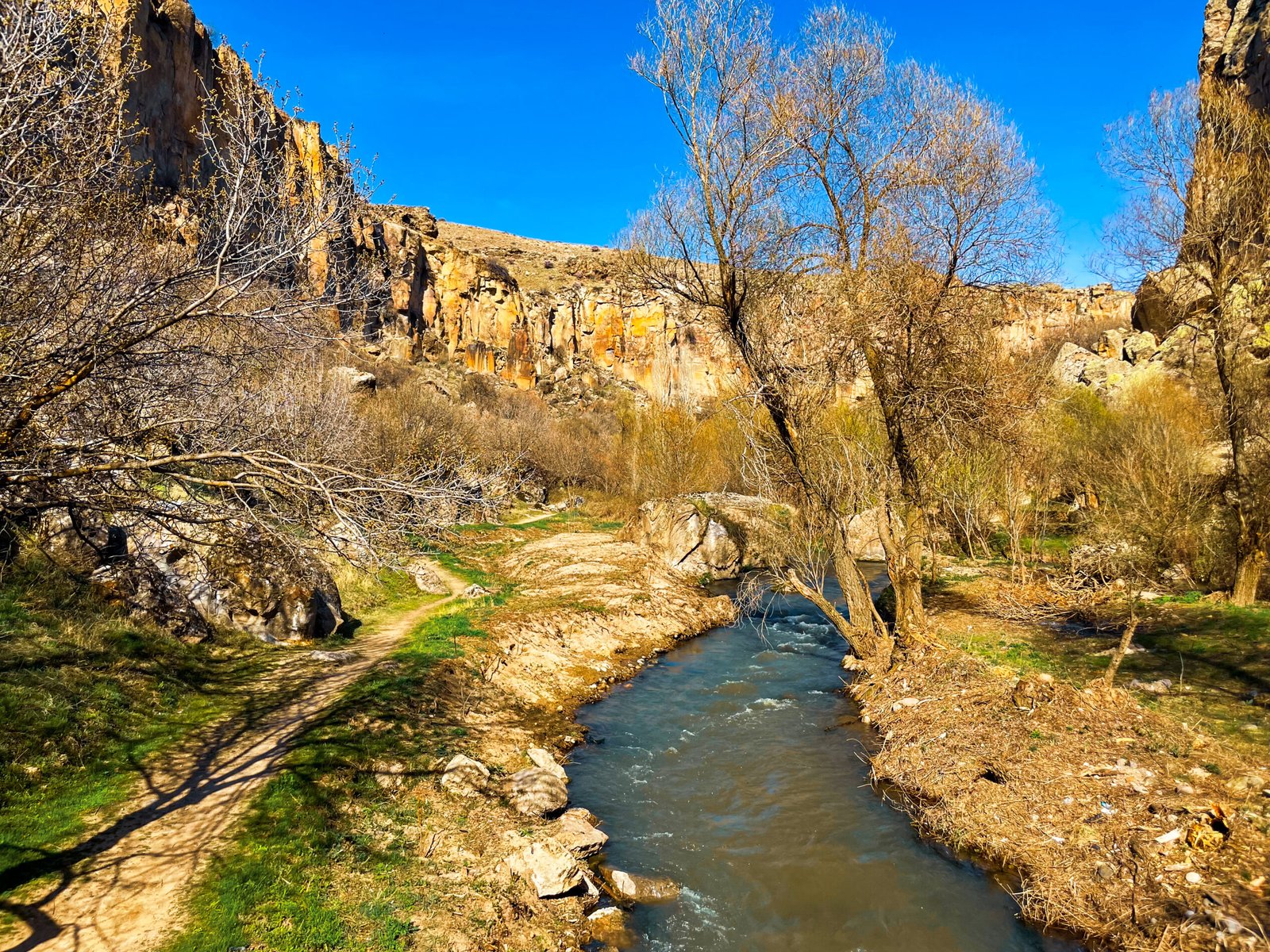
Ihlara Valley, also known as Peristrema Valley, is a lush green valley in Cappadocia, Turkey. Ihlara Valley, unlike other canyons, is the largest canyon in the world where people lived in the past. The Melendiz River, which shapes the Ihlara Valley and gives life to the valley, is the main source of life here. Hundreds of churches and rock-carved places formed by the easy chipping of the rocks surrounding the valley have made the valley one of the most important cultural and civilizational centres of the world.
This area is known for hiking trails and rock-cut churches. Over millions of years, the Melendiz River carved a deep canyon through volcanic rock, resulting in the valley's imposing cliffs and jagged slopes. The valley is home to a variety of flora and fauna, including trees, shrubs, and wildflowers, as well as aquatic life and bird species like kingfishers, eagles, and hawks.
Visitors can hike through the valley, explore rock-cut churches, and relax by the river. Hiking trails offer a variety of options, from easy walks to challenging treks, offering stunning views of the valley's landscape. Rock-cut churches, carved into volcanic rock by early Christians and Byzantines, are decorated with frescoes depicting Bible scenes.
For a more relaxing activity, visitors can relax by the river, enjoying the scenery and sound of the running water. Picnic lunches and riverside meals are also available for those looking to enjoy a meal by the river.
Most Popular Ticket:
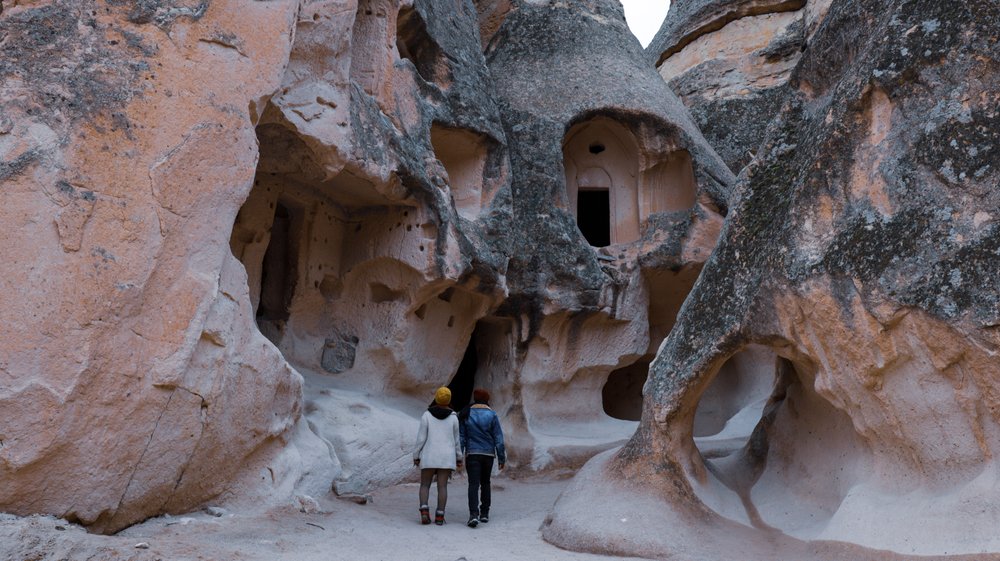
Paşabağ Valley, also known as Monks Valley, is a popular tourist destination in Cappadocia, Turkey. Now known as the Valley of the Monks, Paşabağ Valley was originally a place of solitude and safety for Christian clergy. They hid from the world and professed their faith here. Therefore, they carved soft rocks into dwelling places. We must add that Cappadocia was a major Christian hub centuries ago.
By providing one more fascinating detail about this location, let's ensure that it will be on your list of places to visit in Cappadocia. Although you assume all fairy chimneys in Cappadocia are the same, they are not. Fairy chimneys in Paşabağ Valley have mushroom-shaped caps, which are the most famous ones.
One of the most popular activities in Pasabag Valley is hiking through the valley, which offers a variety of trails ranging from easy walks to challenging treks. Hiking through the valley allows visitors to see the fairy chimneys up close and marvel at their otherworldly beauty. Additionally, visitors can explore the cave churches, which early Christians and Byzantines carved into volcanic rock and decorated with frescoes depicting biblical scenes.
For a more relaxing activity, visitors can enjoy the stunning views in Pasabag Valley from various viewpoints, where they can stop and admire the scenery. Packing a picnic lunch and enjoying a meal in the valley is also a great option.
With a full day of the Cappadocia guided tours, you can see Monks Valley without paying an entrance fee.
Most Popular Tours:
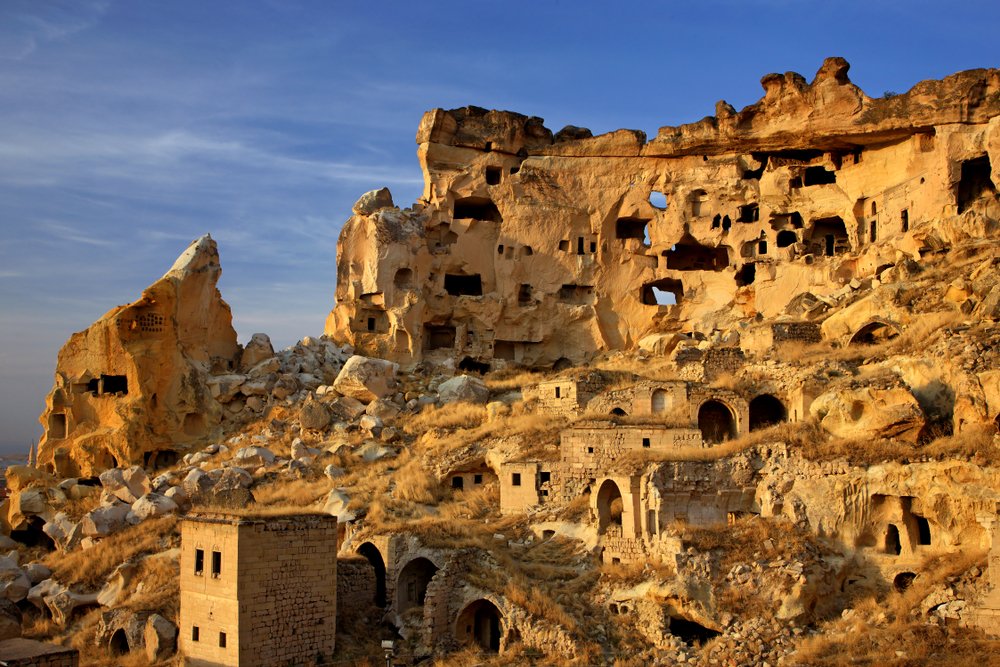
Çavuşin Valley in Cappadocia, Turkey, is a hidden gem that offers visitors a glimpse into the region's rich history and culture. The valley is home to a variety of natural and historical wonders, including fairy chimneys, cave churches, and rock-cut dwellings.
Cavusin, one of the oldest settlements in the region, is located on the Goreme-Avanos road, 2 km from Goreme. The wider rock formation at the top protects the softer rock below from erosion, allowing the fairy chimney to grow taller and thinner over time. Some of the fairy chimneys in Çavuşin Valley are over 100 feet tall and have a unique mushroom shape.
Additionally, the valley is home to early Christians' and Byzantines' rock-cut dwellings and cave churches. These churches are decorated with frescoes depicting scenes from the Bible, and early Christians used the rock-cut homes as residences and places of worship. One of the most popular cave churches in Çavuşin Valley is the Church of St. John the Baptist, built in the 5th century AD and decorated with stunning frescoes.
It is visible from the main road of the village that the narthex of the church, which has a very high single nave, a barrel vault, and three apses, has been destroyed. It is constructed to 964/965. In the years 963–969, portraits of the Byzantine Emperor Nikephoros Phocas and his family were painted in the church, and for this reason, the church was named after this emperor. It is one of the rare churches in Cappadocia whose exact construction date is known.
Activities to do in Çavuşin Valley:
Buy your tickets for Cappadocia's awe-inspiring, must-see Cavusin Valley securely online via this link.
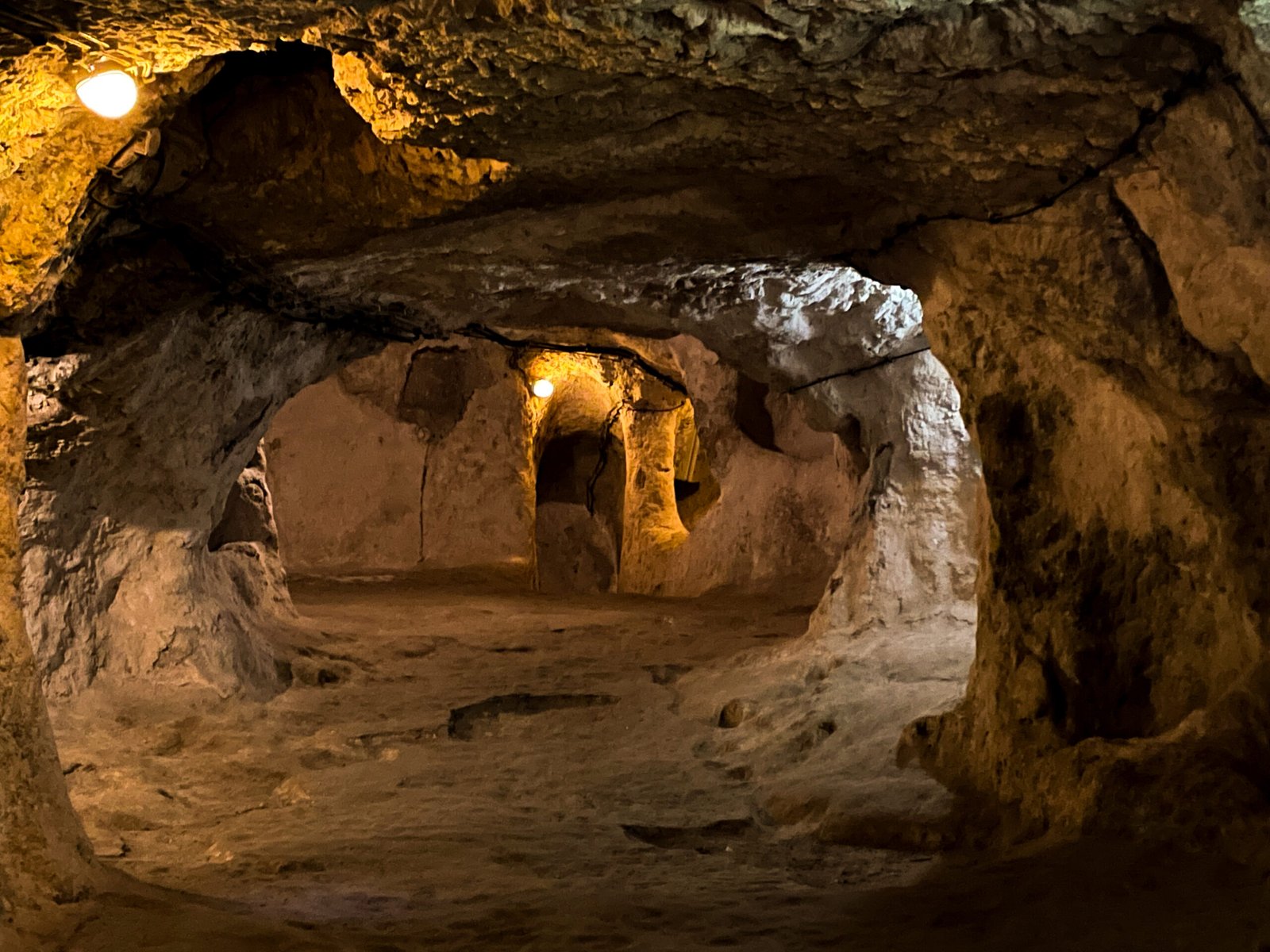
Kaymaklı Underground City, located in Cappadocia, Turkey, is a unique underground settlement dating back to the 8th–7th centuries BC. Carved into soft volcanic tuff rock, it has up to eight levels, reaching depths of up to 85 meters.
The Phrygians, an Indo-European people who inhabited the region during the Iron Age, are believed to have built the city, which is a testament to their ingenuity. The city is a complex network of tunnels, chambers, and rooms interconnected by stairs and shafts. It was designed to be self-sufficient and could accommodate up to 20,000 people, providing everything a community needed to survive.
The city was used as a refuge by locals for centuries, providing protection from invaders, raiders, and extreme weather conditions. The city's narrow tunnels and low-roofed rooms made it difficult for attackers to enter, and the ventilation system ensured a constant fresh air supply. Rediscovered in 1963 and opened to the public in 1985, Kaymaklı Underground City is now one of the most popular tourist attractions in Cappadocia.
Visitors can explore four of the city's eight levels, including living quarters, kitchens, storage rooms, stables, and a church. The tour begins with a descent down a narrow staircase, where visitors must navigate the dimly lit tunnels and cool, damp air. The first level contains living quarters and storage rooms, while the second level contains kitchens and workshops, stables, and animal pens. The fourth level houses a well-preserved church and burial chambers.
Kaymaklı Underground City is a fascinating step back in time, a testament to the ingenuity and engineering skills of the Phrygians, and a reminder of the hardships faced by people throughout history.
Most Popular Ticket:
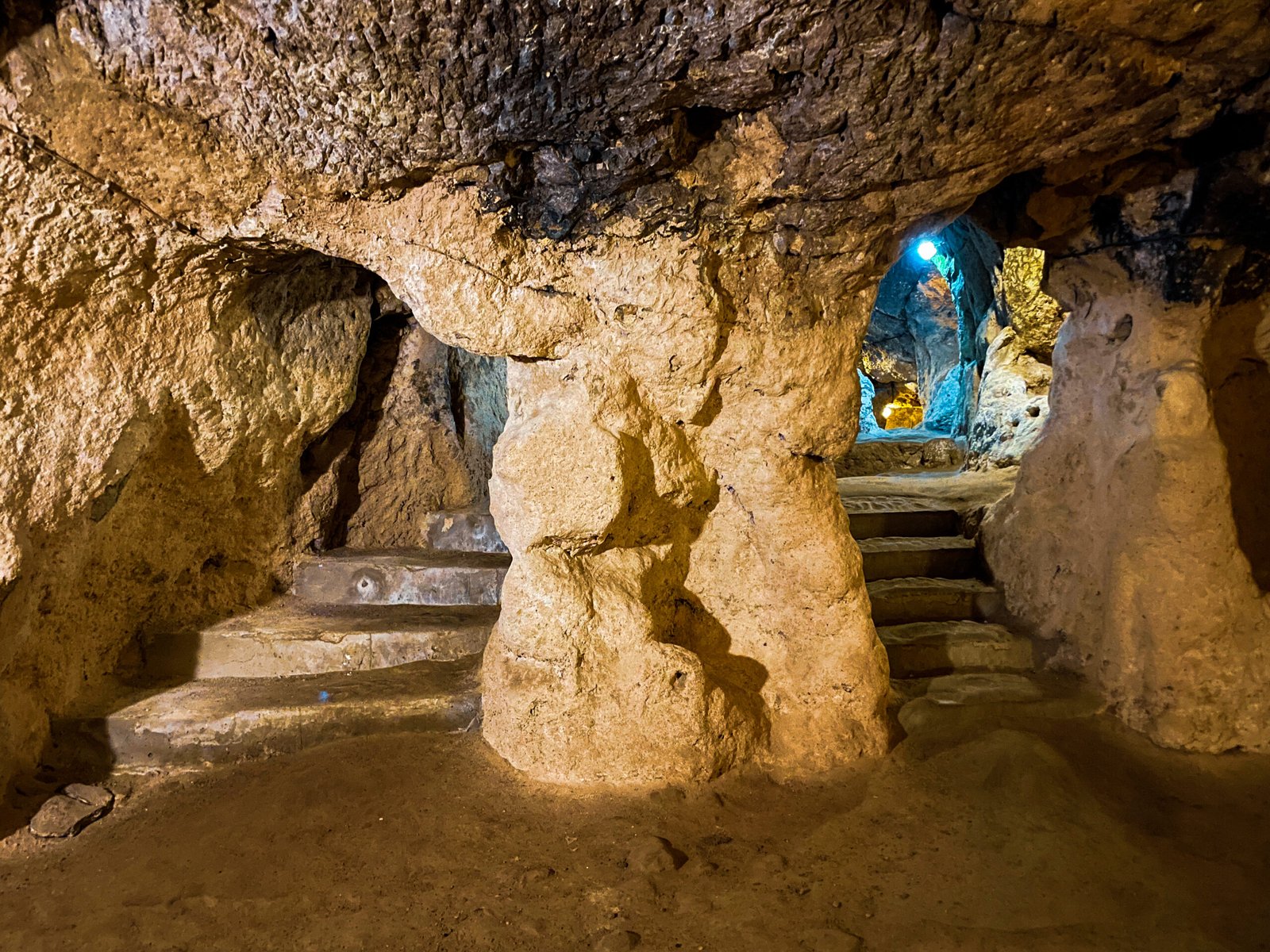
Derinkuyu Underground City, located in Cappadocia, Turkey, is one of the world's largest and deepest underground cities. It is a network of tunnels and chambers that extend over 18 levels and reach depths of up to 85 meters. The city was carved into the soft volcanic rock by early Christians and Byzantines over centuries, and it is believed to house up to 20,000 people, along with their livestock and food supplies. It has everything needed for a self-sufficient community, including kitchens, wells, stables, schools, and even a church.
The city was used as a place to hide from invaders, store food and supplies, and be a place of worship and education. It was abandoned in the 19th century but was rediscovered in the 1960s and opened to the public in 1969. Visitors can explore the city at their own pace, but it is important to stay on marked paths to avoid getting lost.
Some highlights of Derinkuyu Underground City include the Church, which is decorated with frescoes depicting Bible scenes; the Stables, which were well-ventilated and have troughs for feeding the animals; the Storage Rooms, which were cool and dry; and the Ventilation Shafts, which are up to 85 metres deep.
There are several mysteries surrounding Derinkuyu Underground City, such as its construction, purpose, and the use of modern tools and machinery.
Most Popular Ticket:
You are currently viewing a placeholder content from Instagram. To access the actual content, click the button below. Please note that doing so will share data with third-party providers.
More Information